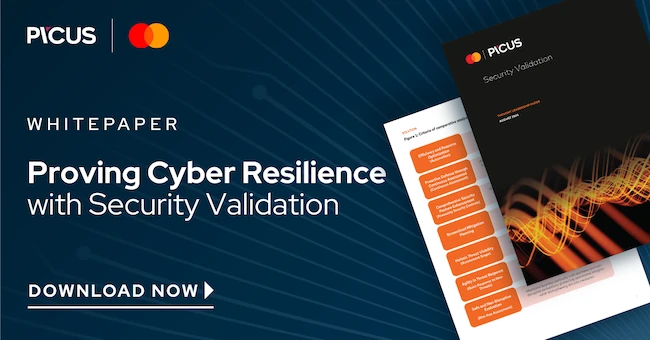Every sizable organization invests heavily in firewalls, SIEMs, EDRs, and countless other technologies that form the backbone of a modern enterprise’s cyber defenses. Yet despite these significant investments, attackers continue to exploit misconfigurations, untested rules, and hidden dependencies that slip through even the most mature and technically sophisticated environments.
For most businesses, the issue is not a lack of technology but misplaced confidence in that technology’s performance. Security teams often assume that deployed controls are functioning as intended. Without continuous validation, however, that assurance remains unproven. This can quickly lead to underutilized investments, unnoticed gaps, and a never-ending search for answers in new tools rather than in optimizing the ones already in place. Over time, this disconnect erodes assurance and the very return on investment (ROI) that security programs are meant to deliver, turning technology abundance into a morass of operational inefficiency.
The ROI problem in cybersecurity
When organizations evaluate their cybersecurity ROI, they often focus on license costs, headcount, and budget allocation across their suite of tools. What they rarely measure is whether those investments are actually performing effectively at the point of need. Without proof, security, and its ROI becomes an assumption, and more often than not, an aspirational goal, rather than a concrete assurance.
Consider a simple example: A company invests in a next-generation firewall with deep packet inspection. On paper, it blocks advanced threats and encrypted malware. In practice, its configuration may exclude certain traffic types, leaving blind spots. Here, the tools are capable of blocking attackers; however, they’re not properly configured to do so. Another example: A business deploys a sophisticated endpoint protection platform, but internal telemetry gaps mean its detections are never triggered during real attacks.
On paper, both organizations can demonstrate compliance. They can show invoices for the “right” tools. Yet neither can actually prove their effectiveness. When a breach occurs, the usual response is to purchase new tools, rather than optimize or validate your existing ones. Yet multiple studies, including the 2023 ESG Research Report and Gartner’s 2024 CISO Effectiveness Survey show that most security gaps arise not from missing tools but from unvalidated or misconfigured ones already in place.
Solving the ROI problem with security validation
If the challenge of cybersecurity ROI lies in unproven control effectiveness, then security validation is its most practical solution. It addresses the root cause of inefficiency by replacing assumed performance with verifiable proof. Rather than pushing organizations to buy more and more tools, hoping they’ve purchased enough, validation enables them to measure, optimize, and justify the value of what they already own. It transforms defense into data and spending into evidence.
Traditional approaches such as vulnerability scanning and penetration testing remain valuable, but they fall short of solving the larger ROI problem. While vulnerability scans identify missing patches and misconfigurations, they can’t determine whether those weaknesses are actually exploitable within a given organization’s defensive layers. Penetration tests offer valuable insights regarding your defenses, but only as periodic snapshots in time. These findings quickly lose relevance as configurations evolve and new threats emerge. Recognizing these limitations, many organizations are turning to Continuous Threat Exposure Management (CTEM), a framework that emphasizes validation as a continuous, measurable process instead of a periodic, point-in-time exercise.
Benchmark among security validation methods (Source: Mastercard and Picus Security)
Security validation brings evidence-based assurance into your daily security operations, ensuring that every control continuously proves its effectiveness against the threats that matter most. To achieve this, it emulates a broad array of the latest adversarial tactics across email, endpoint, identity, network, and cloud layers, then measures how your existing defenses actually respond under real-world conditions.
This continuous feedback loop transforms cybersecurity from a reactive discipline into a data-driven practice. It verifies that new configuration changes haven’t weakened defenses, that new detection rules trigger as intended, and that known attack techniques are being blocked in real time. Most importantly, it closes the visibility gap between policy and performance, giving organizations well-earned confidence that every control is not only deployed, and configured effectively, but is also delivering measurable protection.
For security leaders, validation replaces assumption with evidence It directly links security investments to outcomes and helps teams separate theoretical vulnerabilities from those that pose real, exploitable risks to their organization. This approach enables organizations to focus remediation where it delivers the most value, cutting down on wasted effort, unnecessary tool spend, and reducing doubt about the effectiveness of their overarching defenses.
Proving the value of security investments
Security validation has become essential to achieving measurable ROI from cybersecurity programs, proving that existing controls are performing as intended and that new investments are actually justified. By continuously testing defenses and aligning performance with outcomes, continuous validation ensures that every control delivers measurable value while eliminating wasted spend and operational blind spots.
To learn how this approach can be applied in practice, this Security Validation whitepaper by Mastercard and Picus Security offers detailed guidance on integrating continuous validation into security operations, showing you how your organization can turn its security investments into measurable assurance.

